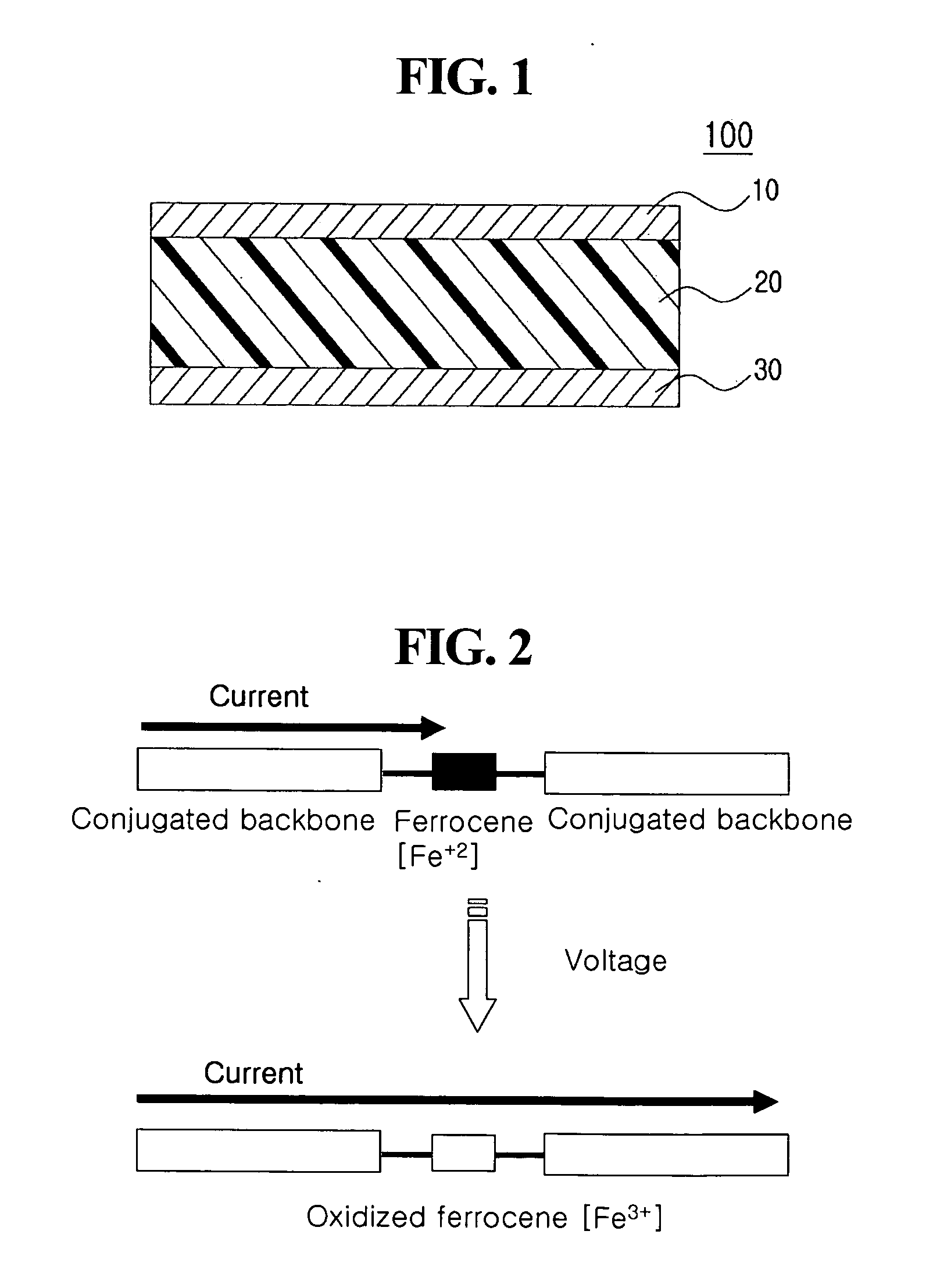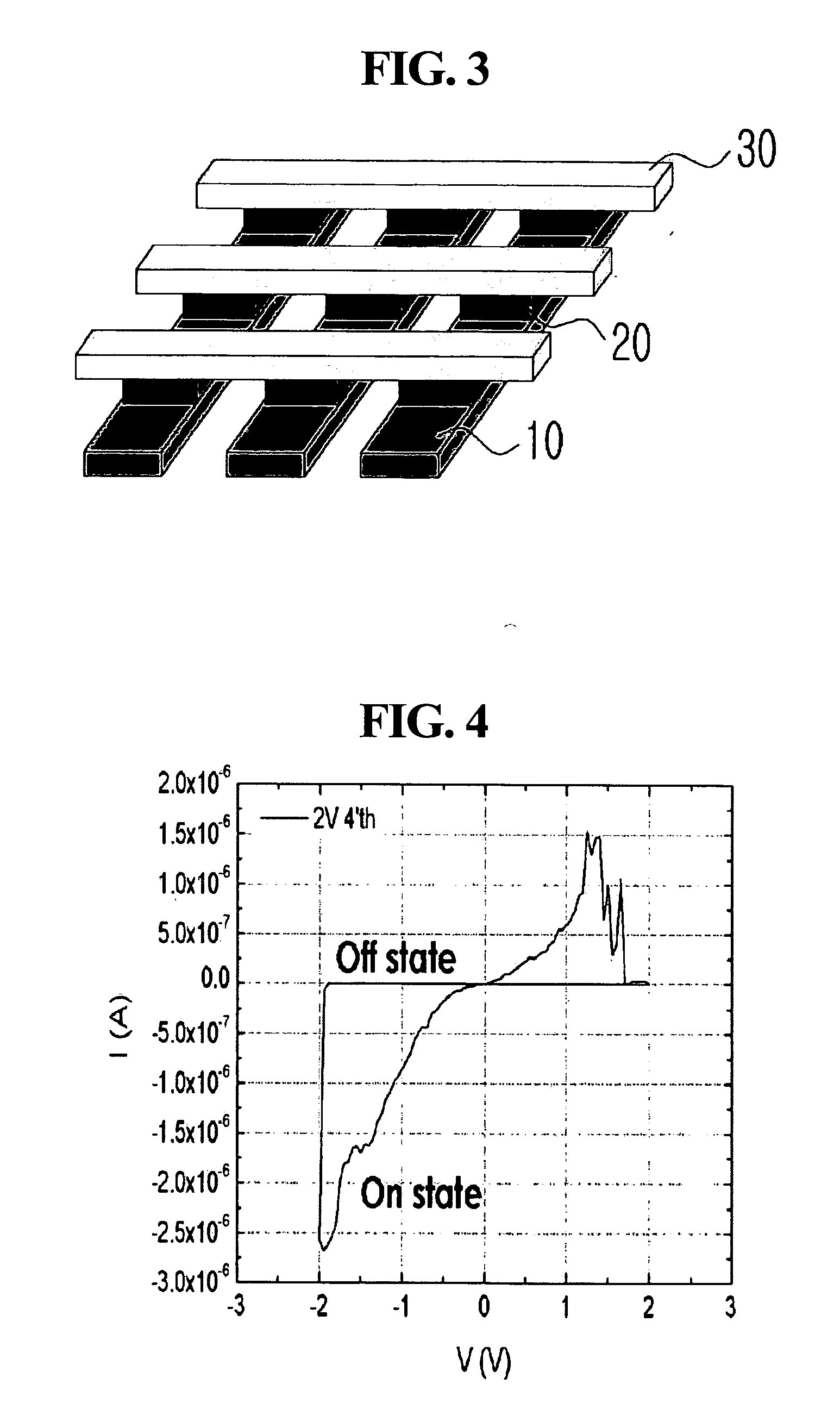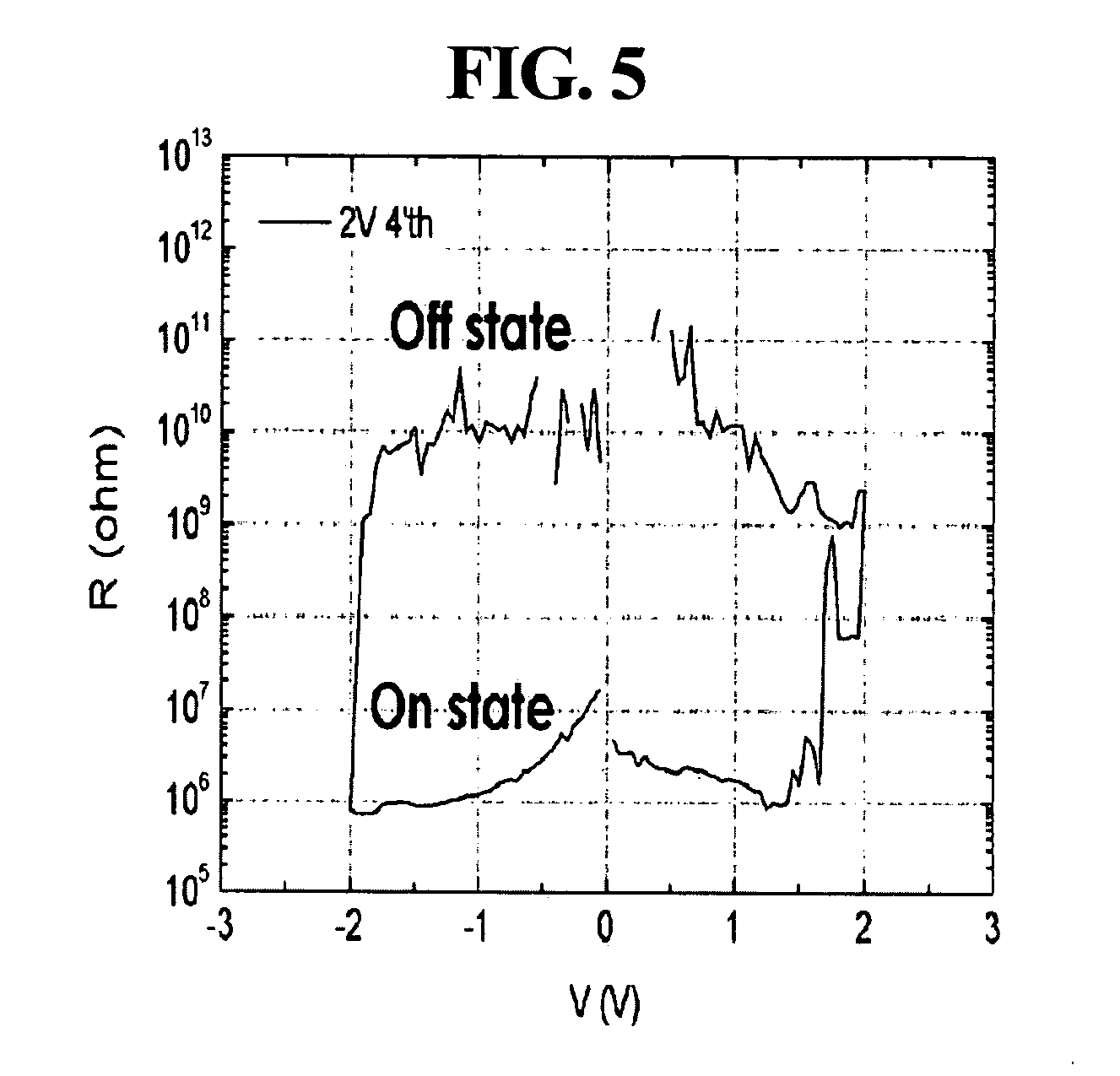Ferrocene-containing polymers and organic memory devices comprising the same
a technology of organic memory and polymer, which is applied in the field of ferrocene-containing polymers and organic memory devices, can solve the problems of no research on the use of ferrocenes and its derivatives, and achieve the effects of reducing fabrication costs, reducing switching time, and reducing operating voltag
- Summary
- Abstract
- Description
- Claims
- Application Information
AI Technical Summary
Benefits of technology
Problems solved by technology
Method used
Image
Examples
example 2
Preparative Example 2
[0096]About 293 mg (about 0.51 mmol) of 1,4-bis(diethyl(2,5-hexyloxy)benzylphosphonate) was placed in a flask, and then about 0.5 ml of THF as a solvent was added thereto under a nitrogen atmosphere. To the mixture was slowly added about 1.3 ml of a solution (about 1 M) of potassium t-butoxide in THF at about 0° C. After stirring for about 30 minutes, a solution (1 ml) of 1,1-ferrocene dicarboxyaldehyde (122 mg) was slowly injected into the mixture. The reaction was allowed to proceed for about 12 hours. The reaction solution was diluted with about 10 ml of methylene chloride and neutralized with a saturated aqueous solution of ammonium chloride. The neutralized solution was transferred to a separatory funnel, followed by phase separation. The obtained organic layer was dried over anhydrous magnesium sulfate and passed through a glass filter to obtain a transparent polymer solution. The polymer solution was evaporated under reduced pressure to remove the solvent...
example 3
Preparative Example 3
[0098]About 92 mg (about 0.39 mmol) of 1,1-divinyl ferrocene, about 214 mg (about 0.39 mmol) of 1,4-bis(2-ethylhexyl)-2,5-diiodobenzene, about 1.8 mg (about 2 mol %) of palladium acetate and about 6 mg (about 5 mol %) of tri(o-tolyl)phosphine were placed in a flask. After a reflux condenser was connected to the flask, about 1.5 ml of 1,4-dioxane as a solvent and about 230 μl (about 1 mmol) of tributyl amine as a base were injected into the flask using a syringe under a nitrogen atmosphere. The reaction was allowed to proceed for about 24 hours. The reaction solution was diluted with about 10 ml of methylene chloride and neutralized with a saturated aqueous solution of ammonium chloride. The neutralized solution was transferred to a separatory funnel, followed by phase separation.
[0099]The obtained organic layer was dried over anhydrous magnesium sulfate and passed through a glass filter to obtain a transparent polymer solution. The polymer solution was evaporate...
example 1
[0101]Al was deposited to a thickness of about 80 nm on a glass substrate (about 0.3 mm×about 1 mm) by thermal evaporation to form a lower electrode. About 10 mg of the ferrocene-containing polymer prepared in Preparative Example 1 was dissolved in about 1 ml of chloroform (CHCl3) by sonication for about 15 minutes. The resulting solution was passed through a syringe filter (pore size: about 0.2 μm) made of PTFE, and spin-coated at about 2,000 rpm on the lower substrate for about 20 seconds. The remaining solvent was removed by baking the coated substrate on a hot plate at about 65° C. for about 10 minutes to form an organic active layer. LiF was deposited to a thickness of about 6 nm on the organic active layer to form a barrier layer, and thereafter, Cu was deposited to a thickness of about 80 nm on the barrier layer to form an upper electrode, completing fabrication of an organic memory device according to example embodiments. The thickness of the organic active layer was control...
PUM
| Property | Measurement | Unit |
|---|---|---|
| Structure | aaaaa | aaaaa |
| Electrical conductor | aaaaa | aaaaa |
Abstract
Description
Claims
Application Information
 Login to View More
Login to View More - R&D
- Intellectual Property
- Life Sciences
- Materials
- Tech Scout
- Unparalleled Data Quality
- Higher Quality Content
- 60% Fewer Hallucinations
Browse by: Latest US Patents, China's latest patents, Technical Efficacy Thesaurus, Application Domain, Technology Topic, Popular Technical Reports.
© 2025 PatSnap. All rights reserved.Legal|Privacy policy|Modern Slavery Act Transparency Statement|Sitemap|About US| Contact US: help@patsnap.com



